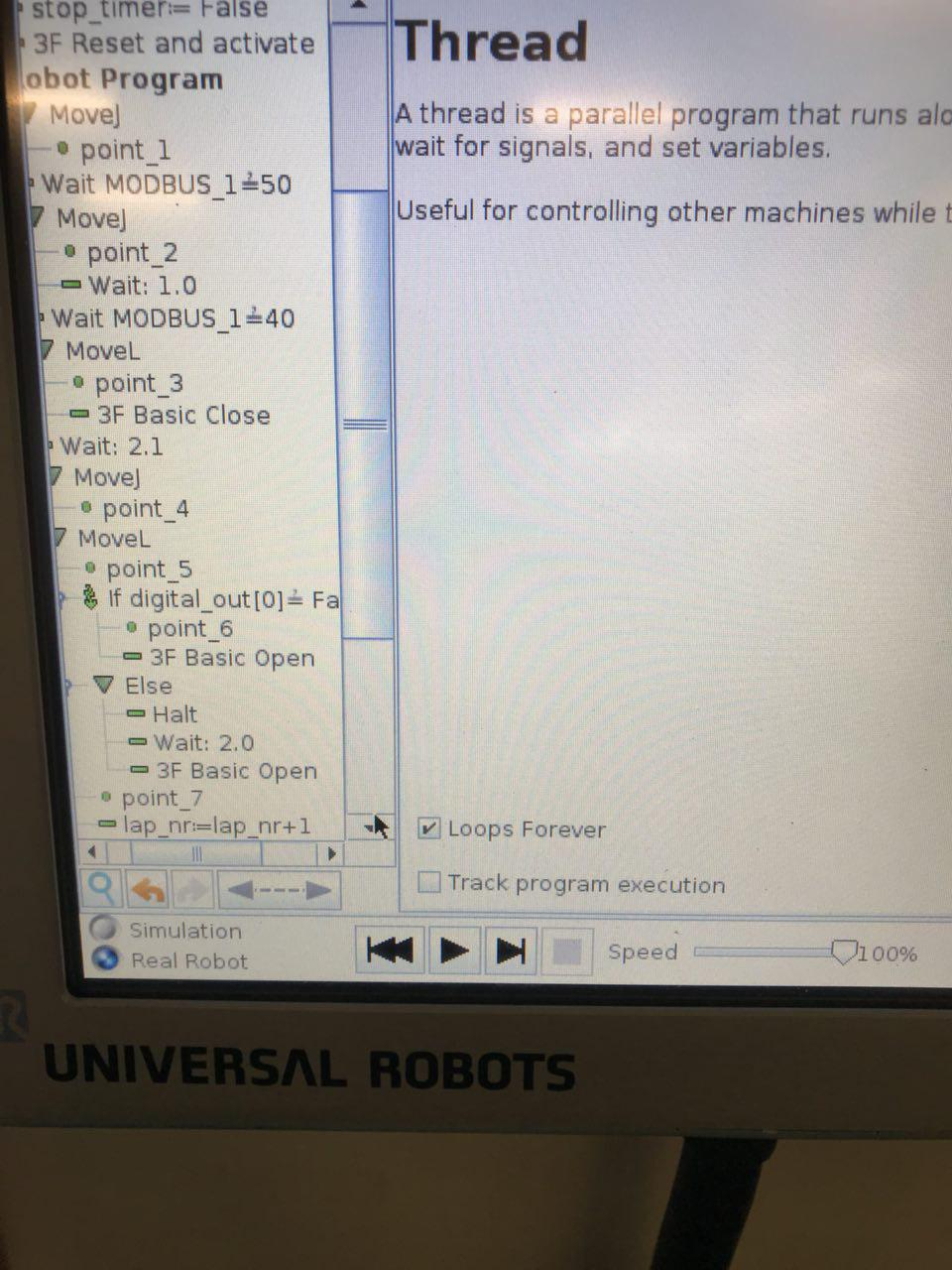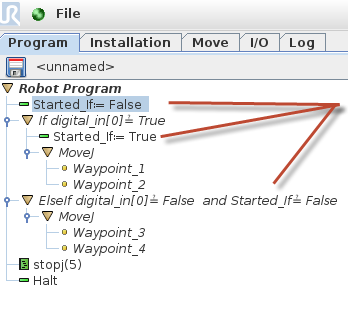Use an If statement with the "Check continuously" box marked which turns it into a while statement basically.
Something like this
movej(variable_waypoint_2)
while not digital_in_1:
movej(variable_waypoint_2)
end
stopj()

 matthewd92
matthewd92


Hi pros,
we are working on a program where we would have two waypoints that are variable waypoints. We would move the robot to the first one. Then the robot would move to the second point but we would like to make the robot stop during that motion to the second point based on a Digital input signal.
How would you program that? Do you think using a thread that is checked continuously makes sense?